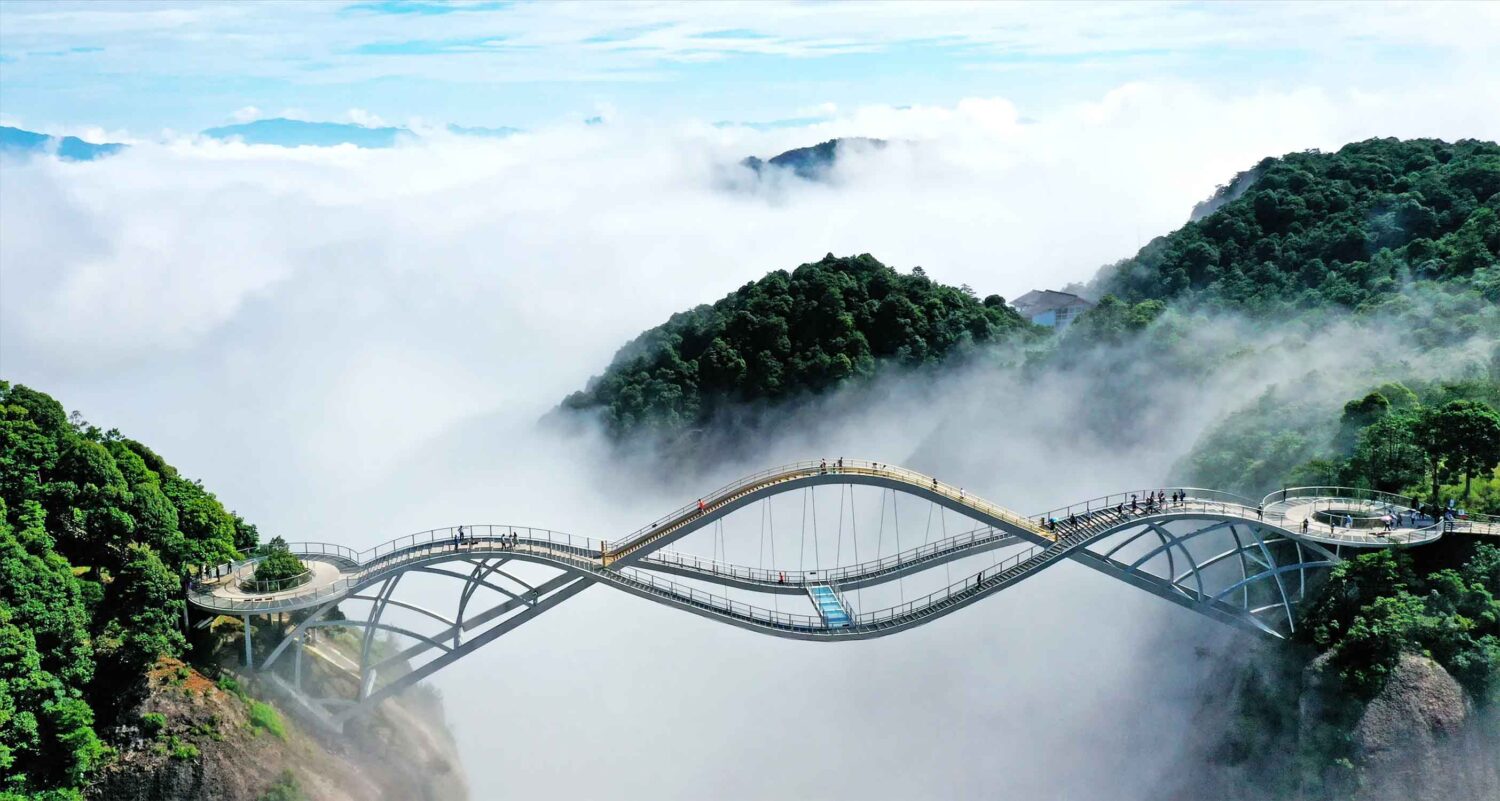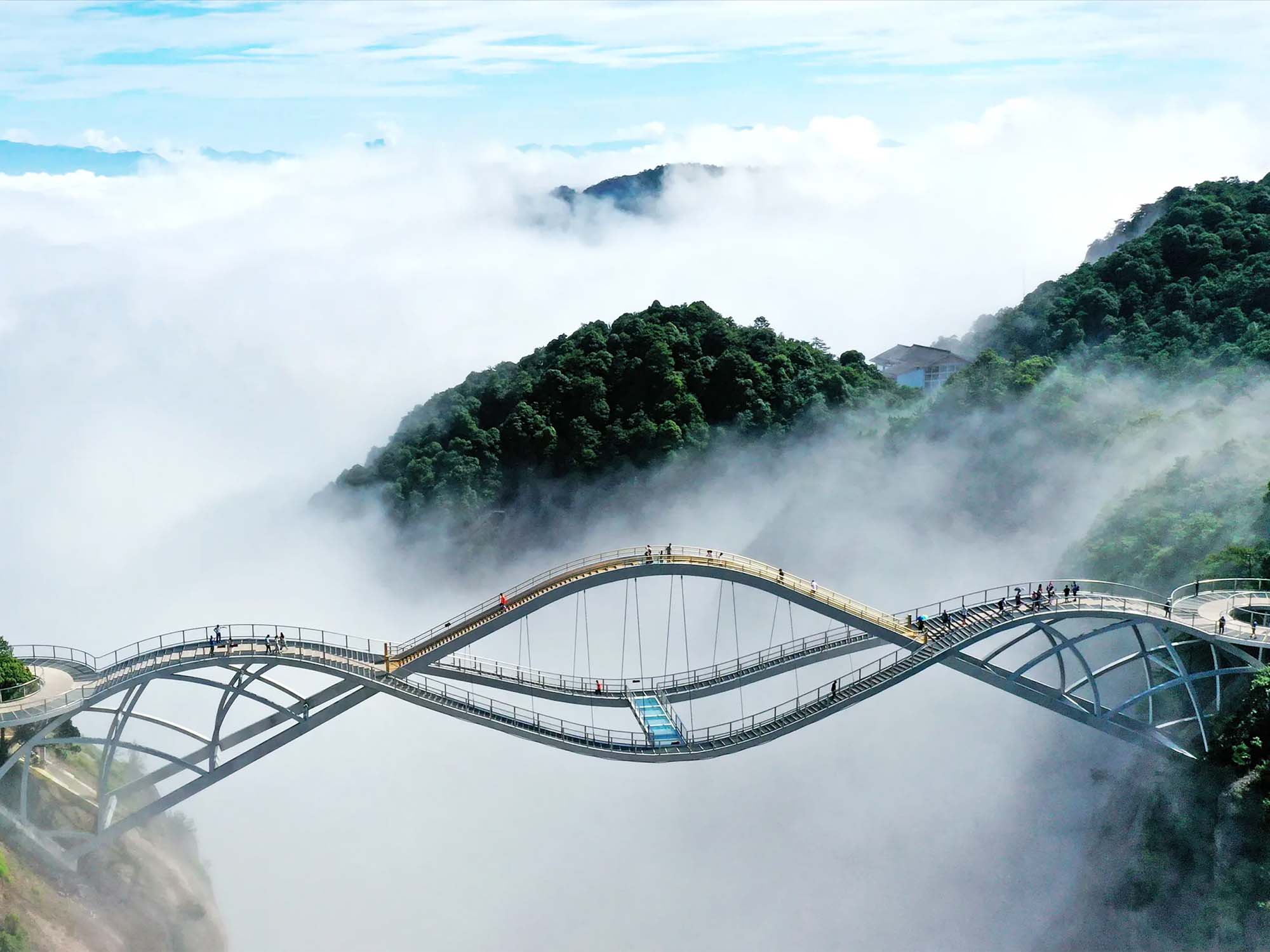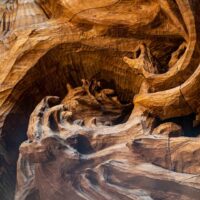Technology is both a problem and a solution. Countless ecological, social, and ethical questions are related to technology. But what is technology, and what could it become? The following reflection includes a look back at a little-known spiritual movement, cosmism.
To escape the boredom of eternity, Zeus, the ruler of Olympus, wanted to populate the earth with mortal creatures. To realise this plan, he asked for the help of two Titan brothers, Epimetheus, “the one with hindsight,” and Prometheus, “the one with foresight.” Epimetheus was enthusiastic and eager to take on the task. He began to create all the Earth’s creatures, carefully assigning each one a special gift so that each species would see its weaknesses balanced by its gifts and thus fit into a harmonious whole, a cosmos, a balanced “ecosystem.” When Prometheus viewed his brother’s work, he discovered that the latter had forgotten to endow the human being with a gift. Epimetheus had already distributed all the gifts—there was nothing left for human beings, and they stood destitute within creation. To resolve this situation and enable humanity to exist, Prometheus stole fire from the gods to give to humans—and with fire, technology and the arts. As a punishment for this rebellious act, the gods created Pandora, “the all-gifted,” a woman of incomparable beauty, and sent her to humankind. Pandora carried a box with secret contents that was not to be opened. But curiosity won out—Pandora opened the box and let evil and misery pour out on human beings. Only “hope” remained in the hastily reclosed box.
This myth contains all the essential building blocks relating to the problem of the relationship between humans, nature, and technology. With Epimetheus, we have the image of a harmonious, natural ecosystem from which humans remain excluded. Only Prometheus can create a place for humans by bringing the fire, technology, and arts that form the origin of civilisation within the natural world. Civilisation is an expression of the transformation as well as the destruction of nature. The human being, who initially had no gifts, is eventually accompanied by the wonderful Pandora, who has all the gifts but also releases evil and misery—the evil and misery that go hand in hand with technologisation are now more visible than ever to modern humanity.
The current ecological question is articulated in our human relationship with technology and nature. Nature, human beings, and technology seem to be divided from one another as if entangled in a life-and-death conflict. In the light of the Prometheus myth, we can, however, assume that technology, although it often seems inhuman and alienating to us, is precisely what most defines us as human beings. Technology is intrinsic to the human being. Therefore, the question of technology is not a secondary, incidental question; it is a central metaphysical question for human beings that has a cosmic dimension.
Consciousness and Technology
The image of the two Titans, one with hindsight directed toward the past and the other with foresight for the future, is reflected in the two sides of the human being’s relationship with the world expressed in the terms episteme and techne. These two concepts from ancient philosophy have received different definitions over time and partly overlap: in both cases, science is involved. However, it is interesting to distinguish between theoretical knowledge, which reflects the existing world—the cosmos—and practical knowledge, which is oriented towards changing the world—transformation. In this sense, if there were only episteme, humans would have no room for freedom and creativity—they would live in an entirely predetermined world. Techne, on the other hand, as “skill,” opens up something like a fracture within the given world, a space for freedom and creation, enabling so-called poiesis: bringing something from non-being to being. Techne thus opens up a space of possibility that, like a dark abyss open to the future, can contain all conceivable promises, as well as disaster. All artistic, cultural, political, and practical creations—in other words, civilisation—arise from this opening in reality.
Technology is as old as humanity. When philosophical thinking emerged in antiquity, the first technical treatises appeared, such as those by Archimedes or Heron of Alexandria. During this time, the first machines gradually emerged. The engineers in Alexandria were already developing precursors of the piston engine. The “Antikythera mechanism,” dating from about the second century BC and discovered in the early twentieth century, is another excellent example of this era. This machine was revealed in the early twenty-first century to have a sophisticated gearing system that reproduced the movements of the cosmos so that the position of the stars could be predicted. It is considered to be the first analogue computer—an “ancient computer” whose principle reflected the cosmos.

With modernity and the Cartesian “I think, therefore I am,” human consciousness completely separated from living nature to become truly independent. At that time, the principle of automatism, of the machine, experienced an unprecedented rise. A world of increasingly automated, self-contained, and autonomous systems emerged, like a mirror image of closed and self-founded human consciousness. From this modern consciousness emerged a technology cut off from the gods, the cosmos, and nature. It is directed downwards, not only towards the earth but even towards what lies beneath the earth’s surface: from ores through coal and oil to the world of electricity, magnetism, and atomic forces—towards the subsurface, which, because it lies beneath visible nature, we call “subnature.” Within this “subnature” are also the billions of processors and electronic mechanisms through which we surf the internet and the entire virtual world. In this subnatural world, a new form of autonomous machine is emerging today, one we call “artificial intelligence.” What is special about it is that it is no longer just a programmed automatism but that it develops its own operational strategies and points us to a new stage in the development of consciousness—something approaching the concept of “autopoiesis”: self-creation. Technical innovations thus reflect human consciousness and its striving to create an autonomous being, a kind of new human being, similar to the homunculus in Goethe’s Faust 1 that plays a central role in Faust’s spiritual development.
The Pharmakon
According to the philosopher of technology Bernard Stiegler (1952-2020), technology should be seen as a pharmakon. Stiegler borrows this term from Greek antiquity to describe a medium that can be both poisonous and medicinal. The toxic potential of technology is well-known, especially in modern history: technology that intervenes in the environment also destroys nature. But it is also the main lever of social oppression, as Marx recognised. By increasing the power of human beings, it also increases what can be egoistic and destructive in them. Certain groups of people can exploit technology to gain power over others. To what extent does technology also have the properties of a remedy? Where can its healing potential be found? The advances in modern medicine undoubtedly reveal an important aspect of the therapeutic dimension of technology. Technology plays a central role in agriculture and everything that protects people from the vagaries of nature and poverty, disease, and death. As described in the myth of Prometheus, technology enables humans to survive in the natural world. But apart from a simple crutch, what promise does technology make to us?
Bernard Stiegler notes that spiritual life always arises in a technical context. Human beings develop their spiritual faculties through a civilisational orientation: the temple, the book, and the musical instrument are technical objects. Stiegler sees the actual manifestation of the human spirit in the work of technology. In the age of the modern culture industry, though, technologies of the mind, in particular, are being held hostage by the powers of the capitalist economy, primarily through mass media. Added to this is the influence of nation-states, which also have powerful technical levers to control spiritual life. Stiegler spent his whole life looking for solutions to free technologies of the mind from these influences and to create technical spaces that could promote a free spiritual life. From his point of view, technical innovations, especially digital technologies, can become a tool for a future economy of solidarity, based, among other things, on a basic income, but also to support a free spiritual life. Here, technology becomes a potential pharmakon for social development. In an interview with the newspaper Socialter in 2017, Stiegler declared: “Spiritual life must rise again in the Anthropocene!”2 In his opinion, it is, above all, a matter of overcoming “entropy,” that is, the processes of death that dominate today’s civilisation, in order to reach the age of so-called “negentropy,” that is, an age in which humans will develop creative forces that can overcome these forces of death.
Technology as Redemption
Most transhumanist views are also about finding redemption in technology. One of the best-known ideas of transhumanism is “mind uploading,” which predicts that exponentially developing computer technology will soon be able to load the human mind into a computer to continue to live there, thus overcoming death. Even if this idea seems far-fetched, recent exponential developments in computing power and artificial intelligence suggest certain possibilities. Yet doesn’t striving for immortality in the microprocessor mean replacing one perishable body with another perishable body? Couldn’t merging the human mind with microprocessors become a new kind of mummification? The motivation remains overcoming illness and death. The idea of triumph over death also lives in Christianity, but traditionally, this redemption happens by grace—it is not human-made.
There is, however, another current that is sometimes seen as a precursor of Western transhumanism. It represents a kind of combination of orthodox Christianity and transhumanism. This school of thought, later called “cosmism”, was started by an unassuming Moscow librarian named Fiodorov (1829-1903) in the late nineteenth century. His Philosophy of the Common Task, sounds exotic to today’s reader. In some places it seems archaic and in others highly topical, if not forward-looking.
Fiodorov places all of humanity at the centre of his reflections, wanting to rediscover humanity’s great solidarity. He views the Western technology that was just arriving in Russia at the time with great misgivings, seeing it as destructive for nature and social-spiritual life. He realises that the selfish appropriation of technology for purely capitalist ends reinforces the power of a few over all others. For Fiodorov, only a technology that emerges from the spirit of human solidarity can be a “good” one. Technological innovations should be seen as a “commons,” as a “common task.” Technology should not only make people’s lives easier—especially those of workers and peasants—but also raise the “blind power of nature,” as he calls it, to a higher level of consciousness. The mission of humanity, he said, was to transform the earth and populate the entire cosmos in order to humanise it and inhabit it with consciousness.

Fiodorov was influenced by the great famine of 1891, which was caused by an extraordinary drought in southern Russia and claimed thousands of lives. At the same time, news reached him that the Americans had succeeded in causing rain by shooting at clouds with artillery. This news was like a revelation to him: destructive technology could be redirected to influence the climate and promote life. It became clear to him that we must learn to manage the climate and atmospheric currents for the common good. His obsession with controlling the climate and using wind and solar energy seems surprisingly topical. Compared to the forces that are drawn from the subsurface—and in his opinion, cause social oppression—Fiodorov prefers the forces that come from the heavens, from the cosmos. He extends his vision beyond the earth’s atmosphere to the cosmos and argues for a “transformation of the solar system into an economy,” especially as it relates to agriculture because he sees agriculture as closely linked to the solar system.
On the one hand, Fiodorov depicts a highly technological humanity capable of controlling the climate, drawing its energy from the solar system and even populating the cosmos; on the other hand, he assigns a significant place to traditional, natural village life, spirituality, and the peasantry. The relationship between nature, humans, and technology is entirely determined by a spiritual ideal that sees technology as a vehicle for spiritual realisation. This view is unacceptable for representatives of traditional Christianity: we should not interfere with God’s creation this way. However, Fiodorov understands his large-scale project as a genuine Christian task: the Creator has placed everything in the hands of human beings. Humans have been given full responsibility. The redemption of the world, and in particular the resurrection of the dead, must not only be expected as a grace from on high but must be realised by the human being, that is, through technology.
In a commentary on the famous words from the last act of Goethe’s Faust 2: “Only the person earns freedom, just as life, / Who daily must conquer them,” Fiodorov summarizes his thoughts: “If we take this statement [of Faust’s] literally, if it is really life that we acquire—not just the means to support life, not intellectual freedom, but real freedom—then the personality will take on gigantic dimensions, a colossal form. The person who has not recreated in their organism the entire history of the earthly planet and the solar system is still a client of the earth, of the sun, of their ancestors; they are not yet worthy of life and freedom. The person who has even one small cell left which has not been constructed by their work is not yet free; they cannot call life their own, and they are not yet even with their ancestors. The human species must transform the embryological process, this genealogical manual that everyone went through in the womb, into an elaborate story, not just an imagination, but a reality. The human beings who transform themselves into microcosms of the earth and the solar system will also transform the earth and the whole system into a new heaven and a new earth inhabited by consciousness.”3 Thus, human bodies and nature must be wholly transformed, and all the deceased should be “physically” resurrected. In contrast to the transhumanists, however, Fiodorov does not direct his gaze to subnature but to the cosmos.
Despite his uniqueness and unassuming nature, Fiodorov influenced the intellectual life of Russia. Personalities such as Leo Tolstoy and the philosopher Vladimir Solovjev, who were in contact with him, were greatly impressed. Solovjev writes in a letter to him, “I accept your project unconditionally […]. I have a lot to tell you. But for now, I will only say that your ‘project’ is the first step of the human spirit on the path of Christ since the advent of Christianity. As for me, I can only recognise in you my teacher and spiritual father.” 4 Tolstoy remains reserved but shows great interest and writes that Fiodorov “leads the purest Christian life” and is “always cheerful and gentle.”
Exploring the Cosmos
Fiodorov’s Philosophy of the Common Task inspired various personalities, such as the scientist Konstantin Tsiolkovsky (1857-1935), who is considered the father of modern cosmonautics. Tsiolkovsky, an inventive figure shaped by his early deafness, cultivated a spiritual—panpsychic—and cosmistic outlook inspired by Fiodorov. He spent his life thinking about how humans could reach space, carrying out numerous calculations and designing systems to conquer space. Although he could not realise his plans, his ideas and research proved lasting validity. The equation that still bears his name continues to be the basis of cosmonautics today: it predicts the trajectory of rockets in space. The globally known entrepreneur Elon Musk, who through his activities in this field is well acquainted with the precursor of space travel and his equations, likes to quote Tsiolkovsky: “Earth is the cradle of humanity, but you don’t spend your whole life in a cradle.”5

Another well-known cosmist was the Ukrainian mineralogist and chemist Vladimir Vernadsky (1863-1945). Vernadsky developed the idea of the “biosphere,” which gives the “living” the status of a geological force and ascribes to it a cosmic origin. “The biosphere is as much (if not more) the creation of the sun as the manifestation of earthly processes. The ancient religious intuitions of humanity, which regarded earthly creatures, especially human beings, as children of the sun, were much closer to the truth than those who believe that earthly beings are only a transient creation, the blind and accidental play of changing matter and earthly forces.”6 He also defines other geological strata, such as the “technosphere,” the result of human technical activity, and the “noosphere,” the sphere of human thought, that have a geological status because they influence the future of the earth. Vernadsky’s thinking will form one of the foundations of ecological thinking. Biologist Lynn Margulis, one of the proponents of the “Gaia theory,” said of him: “Vernadsky does for space what Darwin did for time: whereas Darwin showed that all life descended from a distant ancestor, Vernadsky showed that all life comes from a single material, the biosphere.” 7 And for Vernadsky, this biosphere was closely linked with the life of the sun.
Here, we must also mention Alexander Chizhevsky (1897-1964), who also followed cosmism and founded a new scientific discipline: heliobiology. While pursuing cosmic ideas, he became particularly interested in the sun and found that it has a rhythmical life that can be scientifically proven. He investigated the influence of these rhythms on earthly phenomena such as epidemics. Heliobiology thus studies the sun as a living being. In Chizhevsky’s thinking, it is clear that life is to be seen as a process of cosmic origin: “We tend to take a primary, narrow, anti-philosophical view of life, as if it were the result of the blind play of exclusively earthly forces. That is not the case, of course. For life is far more a cosmic than an earthly phenomenon. It is the result of the creative dynamics of the cosmos in its effect on the inanimate material of the earth. It thrives on the dynamics of these forces, and every beat of the organic pulse correlates with the beat of the cosmic heart, that magnificent collection of nebulae, stars, the sun, and the planets.”8 Heliobiology has given rise to research disciplines concerned with space weather. In addition to basic research on cosmic radiation, solar winds, and other phenomena of space, this field of research also has practical applications in cosmonautics. Space weather researcher Tatiana Podladchikova explains that her work involves “studying the whims of the sun.”
Cosmism thus occupied an important place at the beginning of all cosmonautics, which was to play a central role in the history of the twentieth century with the competition between the Soviet Union and the USA. However, the idea of competition and the technologies of war are by their nature excluded from cosmist philosophy since the latter understands technology only as a means to promote solidarity. The Bolshevists who subsequently came to power persecuted the cosmists—this philosophy was too spiritual for them. The impulse to look at the cosmos nevertheless had the presence of a tidal wave and was, so to speak, appropriated by those in power in a materialistic form: the competition with the USA in space became a game of domination. After the collapse of the Soviet Union and the revival of spiritual ideas in Russia, interest in cosmism was rekindled. Today, it is considered part of Russian philosophical, scientific, and spiritual culture. It is also interesting to see how Elon Musk, who emigrated to the US from South Africa to realise his plans for solar energy, universal internet access, and “multiplanetary living,” seems to be at least partly inspired by this philosophy. The point here is not to discuss the validity of cosmism or the pertinence of Elon Musk’s companies but to point out often unrecognised connections.
The Encounter with Death
In Christian imagery, humanity fell from paradise and lost the tree of life because they ate the fruit of the tree of knowledge. Humanity entered the realm of suffering, disease, and death. To describe this state, ancient Persian mythology tells us that humanity on earth lives in the realm of Ahriman, the spirit of darkness. Ahriman inhabits the whole material world. He is the spirit of death and the antipode of the sun spirit, Ahura Mazda. Paul Du Breuil, an expert on Zoroastrianism, describes Ahura Mazda and Ahriman in relation to the cosmos: “Goodness, the highest virtue of divine wisdom, corresponds in the physical realm to the light of the stars and the sun. It alone enables life and growth. Darkness is identified with evil [Ahriman], not only as the absence of light that suppresses life and produces eternal cold, but as the rejection of light. Through this negative act, the darkness of evil becomes a stubborn darkness that leads to absolute coldness, which in turn leads to spiritual glaciation, the freezing to death of the soul. […] Although Ahura Mazda transcends the elements of physical creation, he remains the pole of essential light, […] manifested through the primordial fire, which is the flashes of light that are wholly metaphysical but precede and give rise to the celestial illuminations of the solar fires.” 9 The motif of a spirituality emanating from the cosmos and especially from the sun also appears here, while the purely material element is inhabited by the cold forces of death.

By becoming independent and more and more oriented towards the material in the world, humanity approached this realm of death. Modern technology—which has emerged from representative, objective thinking detached from the experience of nature—grasps and shapes the mechanical and is necessarily connected with this dead element. Thus, the space of possibility that techne opens up for human reality becomes the space in which humanity encounters the cold spirit of death and mechanics. Technology itself is not this spirit, but it opens the space for it and works with it. Rudolf Steiner repeatedly described these Ahrimanic forces in our time. At a 1915 lecture in Berlin, he said, “The Ahrimanic is at work everywhere in our time. We cannot rebel against it, we cannot criticise it, and we should not want to protect ourselves from it, but rather we should see it as a necessity of our time, as something that has to be there in our time.” He continues: “In our age, it is a question, above all, of the necessity of being chained to Ahriman, to the Ahrimanic that we ourselves generate in our mechanisms, and the necessity of recognising these connections correctly; for otherwise we live in fear of much that is present in our age.”10 However, if we recklessly surrender to this realm, human beings run the risk of isolating themselves more and more, of cutting ourselves off definitively from the cycles of life and the cosmos, and of being drawn into a world without heaven, of sinking into the captivity of subnature, as depicted in the famous dystopia of the Matrix film trilogy. This tendency to drag the human soul down into the underworld of microprocessors is only just beginning and will undoubtedly intensify. But are other perspectives also possible in the company of this spirit of death?
New Abilities
It is precisely in this place that a decisive encounter takes place, because through contact with the cold machine, the human being acquires new abilities. In an article from 1922, Steiner writes, “Cold technology gives human thinking a quality that leads to freedom. Only a dead spirit lives between levers, wheels, and engines, but the free human soul awakens in this realm of the dead. It must awaken the spirit in itself, which was only more or less dreaming when it previously animated nature. The coldness of the machine turns dreaming into waking thinking.”11 Here, the human soul matures. We can observe other emerging qualities, for example, the moral maturation that emerged with the appearance of the atomic bomb: a new consciousness of shared responsibility for humanity and the earth. Or, as paradoxical as it may sound, a potential intensification of the relationship with sensory perceptions, nature, and the cosmos can be observed as a counter-effect of life in virtual worlds.
It was precisely in this emerging technical environment that anthroposophy arose. It is precisely here, from this new inner freedom, that the human being can discover forces within themselves that enable them to extend their consciousness to the spiritual-cosmic dimension—to develop a kind of solidarity with the cosmos. We can develop our knowledge beyond mere mirroring, representative cognition and extend it beyond the mechanical element to the active, living, soul element of the world. Is the earth merely a machine? Is the sun a soulless nuclear power plant? Or can we perceive the sun, as well as the earth, as alive and ensouled? This requires a selfless approach to cognition based on “resonance”—in Hartmut Rosa’s meaning. Then, the human soul no longer risks being “frozen” by the machine. The human spirit then transforms the mechanical world and shapes the technical products artistically, in the sense of a liberation. On this path, technology can be shaped in resonance with the living, not in an Epimethean “return to nature,” but in a Promethean, civilisational, world-changing sense of a “common task.” Thus, a highly technical civilisation that could resonate in harmony with the sun’s forces of life can be glimpsed.
The Redemption of Ahriman
Assuming that a new machine realm emerges—a technosphere that gradually conquers the entire globe and extends to the solar system—the relationship between humans and machines will be long-term. “The forging together of the human being with the machine being will be a great and important problem for the remaining development of the earth,”12 says Steiner in a lecture from 1917. “These things should not be treated as if they have to be fought. That is a completely wrong way of looking at it. These things will not fail to happen; they will come. The only question is whether they are enacted in the course of world history by people who selflessly know the great aims of earthly development and shape these things for the redemption of human beings or whether they are enacted by groups of people who exploit these things only in an egoistic or group-egoistic sense.” 13
Machines and technical solutions—including socio-political forms—do not take the same shape if they are developed out of selfish, short-term impulses or from a philanthropic, long-term perspective for the common good. Many differences in the technical world can be perceived with a certain aesthetic sense. Technology is art. The technosphere offers a variety of technical forms and designs to which it is possible to become receptive. It is not a matter of ideological classifications but of a sensitivity and an inner sense that needs to be trained. Machines of war, though born out of a form of necessity, can be perceived as archaic—an antithesis to machines informed by a free vision of humanity’s solidarity. With the socio-ethical maturation of humanity, technical solutions of all kinds can emerge, capable of promoting freedom, equality, and solidarity, of harmonising with what is alive, even of generating life, of elevating the “unconscious power of nature” and perhaps, in the spirit of cosmism, of raising the cosmos to a higher level of existence.
The danger, therefore, comes neither from technology, machines, nor Ahriman. It lies first and foremost in the fact that not enough people with a selfless spiritual outlook are guiding and shaping technical development. The separation between spiritual and technical people is certainly the greatest danger for future development. For technology to develop in connection with the spiritual needs of the human being and the forces of the cosmos, it is necessary for those who cultivate these connections with the spiritual and cosmic dimension to work in the technological world in order to participate and contribute to its development. And since technology is always a collective, human creation, this means living and working in the technical culture of the time and helping to shape it.
Like Faust, who wants to build a free country for a free humanity against the blind force of nature, human beings transform themselves by transforming the world. If this is a learning process in which the human being learns through contact with the mechanical forces of death to become free and generate new life, we can also ask ourselves the question: could it be that this spirit of death and cold mechanics, which we have called Ahriman, is also going through something in this process? Could it be that Ahriman and the human being, through this Promethean encounter, learn from each other? Could it be that this dark spirit, locked in its coldness, in its pain, in its rigidity, cut off from the forces of life and banished from evolution, could find a new place in evolution if the people bearing the spirit did not retreat in fear but courageously seized their civilisational task?
Translation Christian von Arnim
Footnotes
- Goethe, Faust 2, Act 2.
- Sébastien Claeys, Florent Trocquenet-Lopez, Bernard Stiegler: “Dans l’Anthropocène, la vie de l’esprit doit ressusciter” (“In the Anthropocene, the Life of the Spirit Must Be Desurrected”), in Socialter, August 7, 2020.
- Nikolai Fiodorov, La philosophie de l’oeuvre commune (The Philosophy of Common Work), SYRTES-Verlag.
- From Nikolai Fiodorov, What Was Man Created For? The Philosophy of the Common Task. Hyperion Books 1990.
- Letter to Kaluga, 1911.
- Wladimir Vernadsky, La biosphère (The Biosphere). Seuil 2002.
- George S Levit, “Biogeochemistry – Biosphere – Noosphere: The Growth of the Theoretical System of Vladimir Ivanovich Vernadsky”. In Studien zur Theorie der Biologie, vol. 4.
- LV Golovanov, Alexander Tschitschewski, in F Lesourd (Ed), Dictionnaire de la philosophie russe. L’Age d’Homme (Dictionary of Russian Philosophy. The Age of Humankind), Lausanne 2010, p. 853–855.
- Paul Du Breuil, Zarathoustra et la transfiguration du monde (Zarathustra and the Transfiguration of the World). Payot, 1978.
- Rudolf Steiner, Berlin, January 19, 1915, in GA 157, lecture 5.
- Rudolf Steiner, “Spenglers ‘Welthistorische Perspektiven’ (World Historical Perspectives)”, August 13, 1922, in GA 36, p. 84.
- Rudolf Steiner, “Individual Spirit Beings and the Constant Foundation of the Universe”, Dornach, November 25, 1917, third lecture, in CW 178.
- Ibid.














Great thoughts and article, thank you very much !